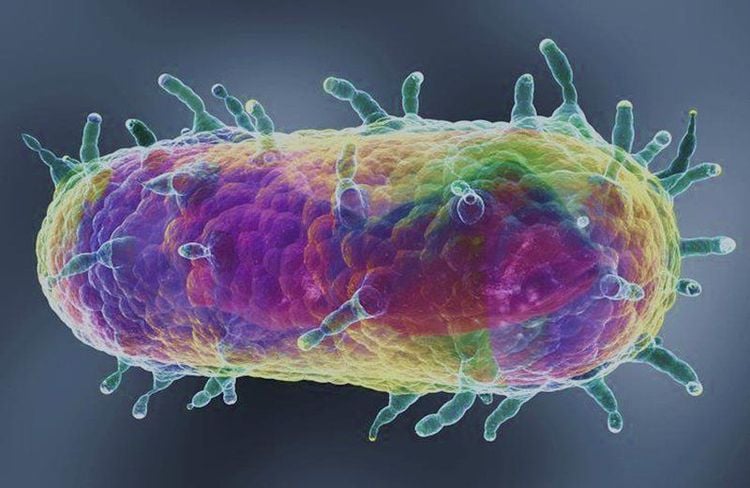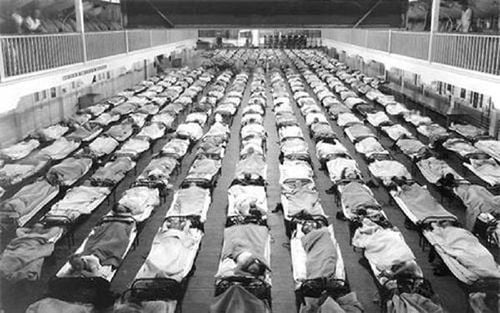This is an automatically translated article.
The Black Death is a plague that occurred in Europe and Asia in the mid-14th century. This is one of the deadliest pandemics that mankind has ever experienced.
1. What is the plague?
Plague reached Europe in October 1347, when 12 ships from the Black Sea docked at the Sicilian port of Messina. Everyone present at the harbor at that time was met with a horror: most of the sailors on these ships were dead, those who were still alive were also seriously ill, covered in black boils all over their bodies. blood and pus. The Sicilian authorities were quick to get the ship of death out of port, but it was too late. That deadly disease has spread and killed more than 20 million people in Europe.
Plague is one of the deadliest diseases in human history, second only to smallpox. For hundreds of years, the cause of the plague remained a mystery, and even it was shrouded in superstitions. But under the development of science, the advent of the microscope has finally revealed the real culprit of this deadly disease. In 1894, Alexandre Yersin discovered the bacterium that causes plague, Yersinia pestis.
Yersinia pestis is an extremely virulent rod-shaped bacterium that disables the host's immune system by injecting toxins into immune cells such as macrophages, which are responsible for detecting bacteria. Intrusion. Once these cells are removed, the bacteria can multiply quickly without hindrance.

Vi khuẩn gây bệnh dịch hạch có hình que
Many small mammals act as hosts for this bacterium, including: mice, squirrels, chipmunks, prairie dogs, and rabbits. During a cycle, Yersinia pestis can circulate at a low rate in rodent populations, leaving it largely undetected because it does not cause epidemics.
Rats have long been considered the main vector of the plague, because of its close association with humans. Recently, scientists discovered that a mouse flea called Xenopsylla cheopis is the main cause of plague cases in humans. When rodents die from bubonic plague, the flea jumps to a new host, possibly a human, and it transmits Y.pestis bacteria to them. Transmission can also occur through handling the tissue or blood of animals infected with bubonic plague or by inhaling airborne droplets of infected secretions.
Plague is characterized by painful, swollen lymph nodes around the groin, armpits or neck. The sores on the skin became black, hence the plague in Europe known as the Black Death. If not treated in time, the plague can turn to pneumonia and fatal sepsis with a very high rate.

Bệnh dịch hạch có khả năng gây tử vong rất lớn
2. Black Death raging in Europe
Before the “death ships” drifted into the port of Messina, many Europeans had heard rumors of a deadly pandemic circulating in the trade routes of the Near and Far East. Yes, in the early 1340s, the disease hit China, India, Persia, Syria, and Egypt.
However, Europeans were still unprepared for the horrifying reality of the Black Death. Blood and pus oozing from the strange bumps, followed by a host of other unpleasant symptoms such as fever, chills, vomiting, diarrhea, terrible aches and pains, and then, only for a short while. , they die.
Black death is really scary, sensory transmission happens very easily, people feel that simply touching the clothes of a sick person can already be infected. The disease also spreads horribly, some people are perfectly healthy when they go to bed at night, by morning they may be dead. Plague became a terrifying obsession of people at that time.

Bệnh nhân bị dịch hạch trải qua nhiều đau đớn trước khi tử vong
3. Understanding the Black Death
At the time of the black death pandemic raging in Europe and many other parts of the world, its true causes were unknown, how it was transmitted, and how to prevent and treat it. That is why they are so afraid of this disease.
Today, we understand that the Black Death was caused by the plague. Yersinia pestis bacteria is transmitted from person to person through the air, or through the bites of infected fleas and rats. Both fleas and rats can be found almost everywhere in the territory of medieval Europe. But they are especially abundant on ships, which is how this deadly plague arrived through a European port city.
Not long after the plague hit the port of Messina, the Black Death reached the French port of Marseilles and the port of Tunis in North Africa. Then it came to Rome and Florence, two cities at the center of a complex network of trade routes. From there, it spread to many parts of the world, and by mid-1348, the plague had reached Paris, Bordeaux, Lyon, and London.
At that time, no one knew exactly how the black death was passed from person to person and no one knew how to prevent or treat it. Some doctors even believe that instant death occurs when a sick person's spirit does not escape will attack a healthy person standing near and looking at the sick person.
There are many strange measures that have been put in place. As the doctors performed blood sucking and boiling, this was an extremely dangerous and unhygienic practice. Superstitious behaviors such as burning fragrant herbs and bathing in rose water or vinegar can prevent disease.

Nhiều biện pháp quái lạ được đưa ra để chữa bệnh
At the same time, in the panic, many healthy people did all they could to stay away from those who were sick. Doctors refuse to see patients, priests refuse to administer funeral rites, shop owners have closed shops. Many people fled the cities to the countryside in the hope of escaping the black death pandemic. But even there, they could not escape the disease: the plague even affected cows, sheep, goats, pigs and chickens.
In fact, many sheep died as a result of a shortage of European wool. And many people in their despair, in order to save themselves, may abandon loved ones who are sick and dying.
Even, there are many people who believe that the Black Death is a divine punishment, a retribution for sins against God such as greed, blasphemy, fornication, worldliness and heresy. According to them, the only way to overcome the plague is to win God's forgiveness. Some prophesy that the way to do that is to purge communities of heretics and other troublemakers. Because of this, thousands of Jews were massacred in 1348 and 1349.
The Black Death epidemic that raged in Europe and many other parts of the world ended in 1350, but the plague still persisted. reappeared after a few generations over the centuries. Good hygiene and public health practices have greatly reduced the impact of the disease, but still cannot be ruled out.
Articles refer to sources: history.com, cdc.gov













